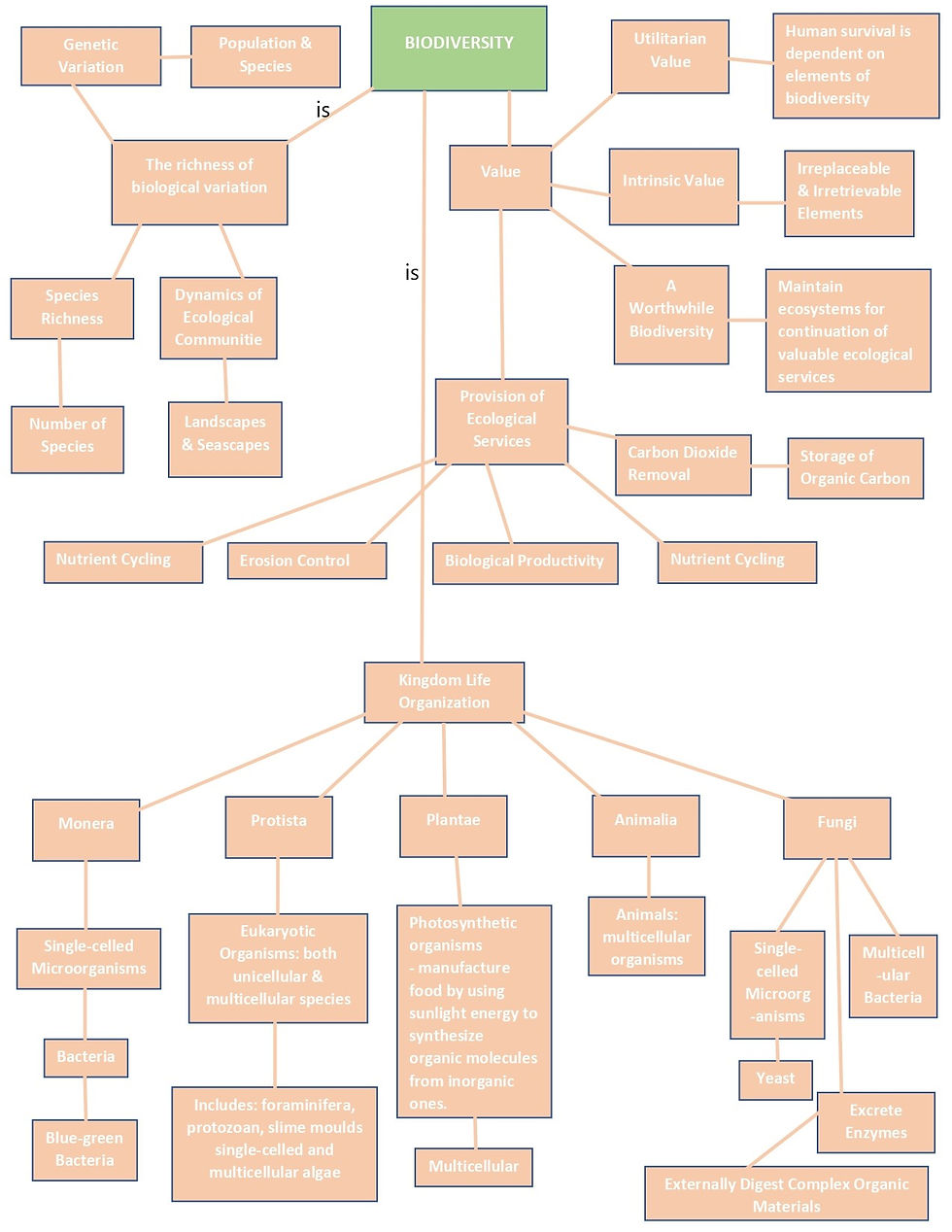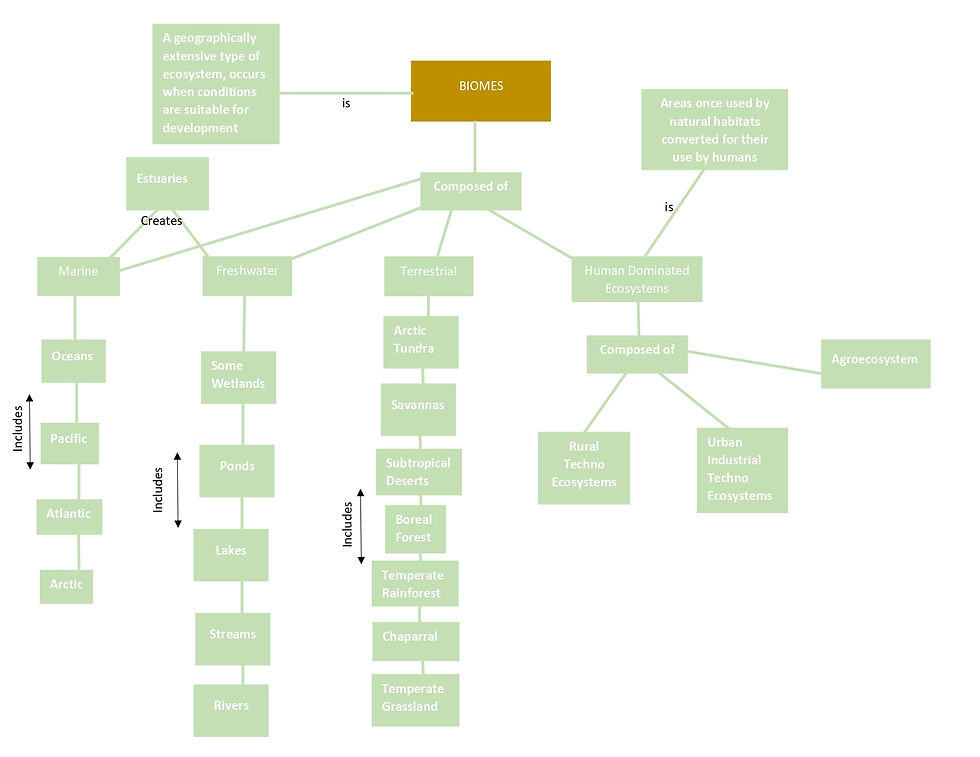Activity 2.3 - Biosphere and Interconnections
- Bailey Moraida

- Feb 19, 2020
- 2 min read
Updated: Feb 20, 2020
Chapter 4: Concept Map
- Energy and Ecosystems -

(Freedman, Bill, pg. 64-76)
Chapter 7: Concept Map
- Biodiversity -

(Freedman, Bill, pg. 119-129)
Chapter 8: Concept Map
- Biomes and Ecozones -

(Freedman, Bill, pg.133-151)
Concept map explanation:
The first concept map shows the importance of energy in our ecosystem. Energy is a major component in the environment, it defines the capacity of a body or system ‘s work. Energy has three states; electromagnetic, kinetic and potential. Energy also includes two laws; the first law of thermodynamics states that energy can be transformed but never created or destroyed. The second law is the transformation of energy. The process of energy can be pin pointed to our sun. This is because The sun maintains the life of photoautotrophs by being their source of energy through photosynthesis. Plants are then eaten by herbivores, who are then eaten by carnivores who then become decomposers which then leads to the constant continuation of this cycle.
The second concept map is about biodiversity. Biodiversity is an essential part of our ecosystem and helps with the survival of living organisms. We as organisms are all apart of the kingdom of life. This kingdom includes; monera, Protista, plantae, animalia and fungi. We all benefit from our ecosystem’s biodiversity. Therefore, it is important to preserve and help our ecosystem, so it continues to be a worthwhile biodiversity. A part of the concept map reviews biodiversity’s value to portray the importance of this irreplaceable element of our ecosystem.
The third concept map reviews biomes which is a geographically extensive type of an ecosystem. Biomes are made up of four categories; marine, freshwater, terrestrial and human dominated ecosystems. The marine category includes oceans while the freshwater category includes bodies of water like lakes and ponds. The terrestrial category includes many different environments like deserts, forest, rainforest and tundra’s. The human dominated ecosystems are an ecosystem that is created and does not naturally exist. Biome needs biodiversity to maintain a working ecosystem.
An ecosystem can maintain proper function because of elements like energy, biodiversity and biomes. An ecosystem consists of many different organisms that rely on these three different elements and everything that makes up these elements.
References
Freedman, Bill. Environmental Science: a Canadian Perspective. W. Ross MacDonald School Resource Services Library, 2012




Comments